Crunch Time Danger: Can Cats Eat Pork Rinds? A Vet's Perspective on This Salty Snack
- 26 Apr 2025 09:31
Pork rinds, those airy, crunchy, savory snacks often found alongside chips and pretzels, might capture your cat's attention with their smell or the satisfying crunch sound. As a loving pet owner, you might be tempted to offer a tiny piece, especially if your cat seems curious. This leads to the critical question: can cats eat pork rinds? Despite their seemingly simple nature (fried pork skin), the answer from veterinary professionals is a firm and resounding **NO**. Pork rinds are loaded with ingredients and possess qualities that make them unhealthy, unsuitable, and potentially dangerous for feline consumption. This comprehensive guide will delve into the reasons why this popular human snack should be strictly off-limits for your cat, exploring the significant health risks involved.
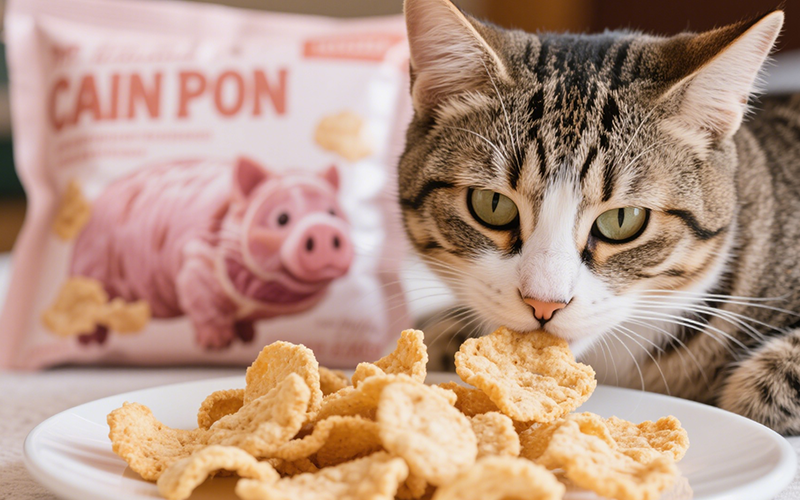
What Exactly Are Pork Rinds?
Understanding what pork rinds are made of is the first step in recognizing the risks. They are typically produced by:
Simmering pork skin (often with adhering fat).
Scraping away excess subcutaneous fat (though some fat remains).
Cutting the skin into pieces.
Drying the skin thoroughly until hard and brittle.
Deep-frying (or sometimes baking at high temperatures) the dried skin pieces. The intense heat causes the skin to rapidly puff up, creating the characteristic light, airy texture.
Seasoning heavily, almost always with salt and various other flavor powders.
This process inherently results in a product that is extremely high in fat and sodium, and often coated with potentially harmful seasonings – all major red flags for feline health.
Feline Nutrition Basics: Why Pork Rinds Don't Fit
Cats are **obligate carnivores**. This means their evolutionary path and biological makeup demand a diet primarily composed of animal-based proteins and fats. Their digestive systems are highly specialized for processing meat and have limited capacity to efficiently handle large amounts of certain types of fats, carbohydrates, or plant-based ingredients. Key nutritional points relevant here:
Need High-Quality Animal Protein:** Essential for muscle maintenance, enzyme production, and overall health.
Specific Fat Requirements:** Need certain fatty acids (like arachidonic acid) found readily in animal tissues, but excessive amounts of the *wrong types* of fat are detrimental.
Minimal Carbohydrate Need:** Have no dietary requirement for carbohydrates and limited enzymes to process them efficiently.
Sensitivity to Toxins:** Can be highly sensitive to certain compounds commonly found in human seasonings (like garlic and onion).
Pork rinds, being high in processed fats, sodium, and lacking essential feline nutrients, starkly contrast with a cat's natural dietary requirements.
Major Health Risks: Why Pork Rinds Are Dangerous for Cats
Feeding pork rinds to your cat poses several serious health threats:
1. Extremely High Fat Content & Pancreatitis Risk
This is one of the most significant dangers. The deep-frying process makes pork rinds incredibly high in fat, often unhealthy saturated or trans fats.
Pancreatitis Trigger:** Suddenly consuming a high-fat food like pork rinds is a well-known trigger for **pancreatitis** in cats (and dogs). Pancreatitis is a severe and painful inflammation of the pancreas, the organ responsible for producing digestive enzymes and insulin. High fat levels can cause digestive enzymes to activate prematurely within the pancreas, leading to self-digestion and inflammation.
Symptoms of Pancreatitis in Cats:** Feline pancreatitis can be challenging to diagnose as symptoms can be vague, but often include:
Lethargy and depression (often the most prominent sign)
Loss of appetite (anorexia)
Dehydration
Vomiting (less consistent than in dogs)
Diarrhea (less common)
Abdominal pain (cats may hide or resist being handled)
Low body temperature (hypothermia)
Jaundice (yellowing of skin/eyes in some cases)
Severity:** Pancreatitis in cats can range from mild to life-threatening, often requiring intensive veterinary care, hospitalization for fluid therapy, pain management, nutritional support, and treatment of complications. This risk alone makes the answer to "can cats eat pork rinds?" a strong negative.
Obesity:** Even if pancreatitis doesn't occur, the high fat content provides excessive calories, contributing directly to weight gain and obesity. Obesity dramatically increases a cat's risk for diabetes, arthritis, urinary issues, liver disease (hepatic lipidosis), and a shorter lifespan.
2. Excessive Sodium (Salt) Content
Commercial pork rinds are heavily salted for flavor. Cats have very low sodium requirements, and excess salt is dangerous.
Dehydration:** High salt intake draws water out of cells and increases thirst. If the cat doesn't drink enough extra water, dehydration can result.
Electrolyte Imbalance:** Affects crucial bodily functions.
Increased Blood Pressure:** Can worsen pre-existing heart or kidney conditions.
Sodium Ion Poisoning (Hypernatremia):** Ingesting large amounts of salt can overwhelm the body's ability to regulate sodium levels. This is a serious emergency with neurological consequences, including:
Vomiting and diarrhea
Lethargy
Incoordination (ataxia)
Tremors
Seizures
Coma
Potential death
3. Harmful Seasonings: The Hidden Toxins
Beyond salt, the flavor powders used on pork rinds often contain ingredients toxic to cats:
Garlic Powder & Onion Powder:** These are extremely common in savory snacks and are **HIGHLY TOXIC** to cats. As members of the *Allium* family, they cause oxidative damage to red blood cells, leading to hemolytic anemia. Symptoms (lethargy, pale gums, rapid breathing, weakness, collapse) may take days to appear. Cats are even more sensitive than dogs.
Spicy Seasonings (Chili, Cayenne):** Contain capsaicin, which can cause severe oral irritation (burning mouth, drooling) and gastrointestinal upset (vomiting, diarrhea).
MSG (Monosodium Glutamate):** Can cause sensitivity reactions in some pets, leading to digestive upset or neurological signs.
Artificial Flavors/Colors:** Potential for allergic reactions or sensitivities.
The frequent presence of garlic or onion powder is a critical reason why flavored pork rinds must be avoided.
4. Choking Hazard and Digestive Issues
The physical properties of pork rinds also pose risks:
Hard/Sharp Texture:** Some pieces can be hard or have sharp edges, potentially causing cuts in the mouth or posing a choking hazard, especially if the cat tries to swallow large pieces.
Indigestibility:** While derived from animal skin, the processing (especially drying and frying) can make them difficult for a cat's system to break down properly, potentially leading to vomiting or diarrhea even if other toxins aren't involved.
Potential for Obstruction (Less Common but Possible):** Large, improperly chewed pieces could potentially contribute to an esophageal or gastrointestinal blockage, although this is less common than with items like string or bones.
5. Lack of Nutritional Value
Pork rinds offer virtually nothing beneficial for a cat. They are primarily fat and sodium with low-quality protein (collagen from skin isn't as complete as muscle meat protein for cats) and lack essential feline nutrients like taurine, specific vitamins, and balanced fatty acids. They are purely empty, unhealthy calories.
What About Plain, Unseasoned Pork Rinds?
Some might wonder if homemade, plain, unseasoned pork skin (cooked until puffy) would be safer. While removing the toxic seasonings and controlling the salt is slightly better, the fundamental problems persist:
Still Very High in Fat:** Pork skin itself is fatty, and the cooking process required to make it puff often involves high heat and rendering fat, keeping the fat content dangerously high (pancreatitis/obesity risk).
Still Difficult to Digest:** The processed texture remains hard for a cat's system to handle efficiently.
Still Lacks Balanced Nutrition:** It remains nutritionally poor for a cat.
Still Potential Choking Hazard:** The texture can still pose a physical risk.
Therefore, even plain versions are not a recommended or safe treat.
Emergency Action: What to Do If Your Cat Eats Pork Rinds
Accidents happen. If your cat manages to snatch a pork rind: 1. **Prevent Further Access:** Immediately remove the pork rinds from your cat's reach. 2. **Identify Type & Quantity:** Determine if it was plain or flavored. If flavored, try to ascertain the flavor/ingredients (especially checking for garlic/onion). How much was eaten? 3. **Do NOT Induce Vomiting:** Never attempt this at home unless explicitly instructed by a veterinarian, as it can be dangerous. 4. **Contact Your Veterinarian or Emergency Pet Clinic IMMEDIATELY:** This is crucial, especially if flavored pork rinds (containing potential garlic/onion) were ingested or if a significant amount was consumed. Explain the situation clearly: what was eaten, how much, when, known ingredients, and your cat's details (age, weight, breed, health history). 5. **Monitor Closely:** Follow your vet's advice. Watch vigilantly for several days (remembering garlic/onion toxicity symptoms can be delayed) for any signs of illness: * Lethargy, hiding, depression * Vomiting, diarrhea * Loss of appetite * Pale gums, rapid breathing * Abdominal pain or discomfort * Tremors, seizures, incoordination * Increased thirst or urination 6. **Seek Veterinary Care Promptly:** If any symptoms develop, contact your vet immediately or return to the emergency clinic. Prompt treatment for conditions like pancreatitis or Allium toxicity is vital.
Pork Rind Safety for Cats: Risk Summary Table
This table highlights the primary dangers:
| Risk Factor | Concern Level for Cats | Details & Recommendation |
| High Fat Content | High Risk / Unhealthy | Risk of **pancreatitis** (potentially fatal), contributes to obesity. Avoid. |
| High Sodium (Salt) Content | High Risk / Unhealthy | Risk of dehydration, sodium poisoning, worsens heart/kidney issues. Avoid. |
| Harmful Seasonings (Garlic/Onion) | HIGHLY TOXIC / DANGEROUS | *Allium* toxicity causes hemolytic anemia. Potentially fatal. **AVOID COMPLETELY.** Immediate vet consult if ingested. |
| Spicy Seasonings | Moderate Risk / Unpleasant | Causes oral and G.I. irritation. Avoid. |
| Choking/Digestive Hazard | Moderate Risk | Hard/sharp pieces, difficult to digest. Avoid. |
| Lack of Nutritional Value | Unhealthy | Empty calories, lacks essential feline nutrients. Avoid. |
| Overall Answer to: Can cats eat pork rinds? | NO. Pork rinds are unsafe for cats due to high fat (pancreatitis risk), high salt (toxicity risk), dangerous seasonings (garlic/onion toxicity), choking/digestive hazards, and lack of nutritional value. Never feed them to cats. | |
Utilizing Pet Tech for Information: PettureX App
Navigating pet safety concerns, especially regarding potentially toxic foods, can be stressful. Having resources for quick information can be valuable while you contact your veterinarian. The **PettureX** app is a modern tool designed to assist pet owners. PettureX features that can help:
24/7 AI Veterinary Consultation: Get instant, general answers to questions like "What makes garlic toxic to cats?" or "What are the signs of pancreatitis in cats?". Use the AI chat for quick background information to understand the potential risks involved. *Remember, AI consultations provide general information and cannot replace professional veterinary diagnosis or treatment.*
Image Recognition for Pet Health:** Useful for identifying visual symptoms (like pale gums, if visible) to discuss with your vet.
Animal Species Identification:** Can help identify potentially harmful plants or items in your pet's environment.
PettureX can serve as a helpful resource for accessing general knowledge quickly, supporting informed decisions alongside your veterinarian's essential guidance.
Truly Safe and Healthy Treat Alternatives for Cats
Instead of offering dangerous human snacks like pork rinds, treat your cat with options that are safe, healthy, and species-appropriate: * **Plain Cooked Meat:** Small pieces of unseasoned cooked chicken, turkey, lean beef, fish, or lamb (ensure no bones). * **Commercial Cat Treats:** Choose high-quality treats formulated specifically for cats. Look for meat-based ingredients, low calories, and minimal artificial additives. Lickable treats or dental treats can be good options. * **Freeze-Dried Meat Treats:** Single-ingredient treats (like chicken, salmon, minnows) are highly palatable and nutritionally appropriate. * **Catnip:** A pinch of dried or fresh catnip (for cats that react to it) provides safe enrichment. * **A Small Amount of Cat Grass:** Satisfies the urge to chew greens safely. * **A Spoonful of Their Wet Food:** Using their regular food as a special treat ensures nutritional balance. Always introduce new treats gradually and ensure they make up less than 10% of your cat's total daily calorie intake.
Conclusion: Keep Pork Rinds Strictly for Humans
To definitively answer the question "can cats eat pork rinds?", the verdict based on veterinary expertise and nutritional science is an emphatic **NO**. Pork rinds are a hazardous snack for cats due to their dangerously high fat content (risking pancreatitis), excessive sodium levels (risking salt poisoning), and the frequent inclusion of highly toxic seasonings like garlic and onion powder. They also pose physical risks and offer zero nutritional benefits for an obligate carnivore. Protect your feline companion's health and well-being by keeping pork rinds and other salty, fatty, or seasoned human snacks securely out of their reach. Choose safe, species-appropriate treats to show your affection. If accidental ingestion occurs, contact your veterinarian immediately for guidance. Responsible cat ownership means recognizing and avoiding the hidden dangers in seemingly innocuous human foods.
Related
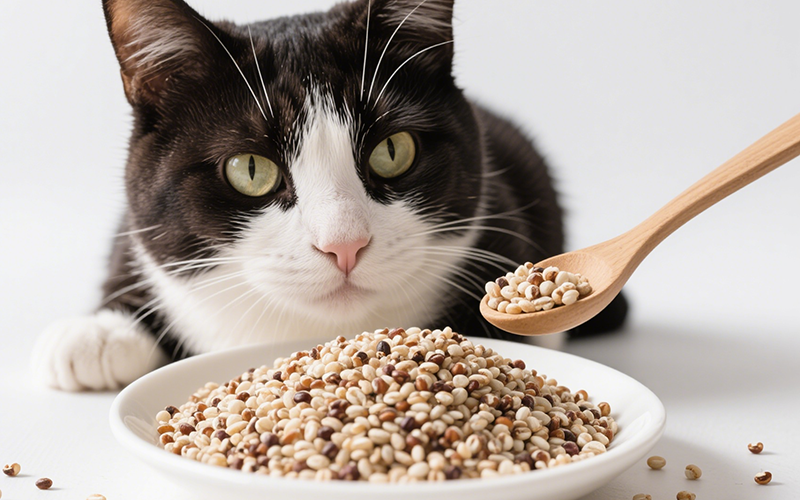
Quinoa for Kitties? Unraveling the Safety of This Trendy Grain for Cats
- 26 Apr 2025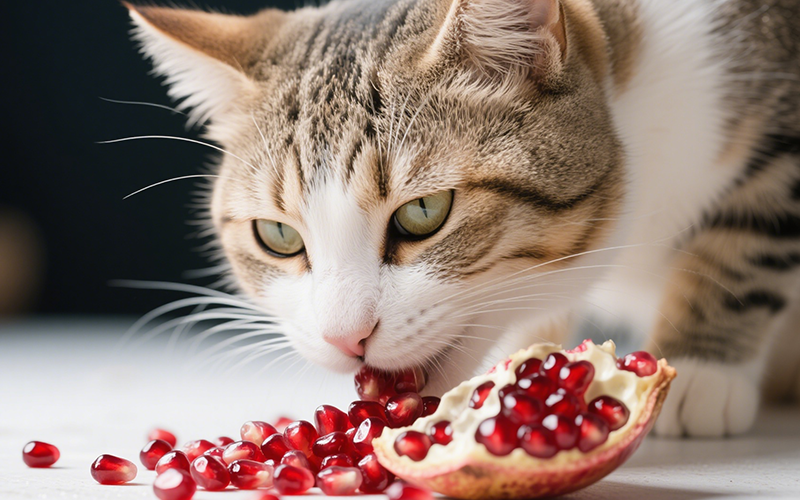
Pomegranate Peril: Can Cats Eat the Seeds Safely? A Vet-Reviewed Guide
- 25 Apr 2025
Prickly Problem: Can Cats Eat Pineapple Leaves Safely? A Vet-Reviewed Risk Analysis
- 25 Apr 2025
The Prickly Truth: Can Cats Eat Pine Needles Safely? A Guide for Concerned Owners
- 24 Apr 2025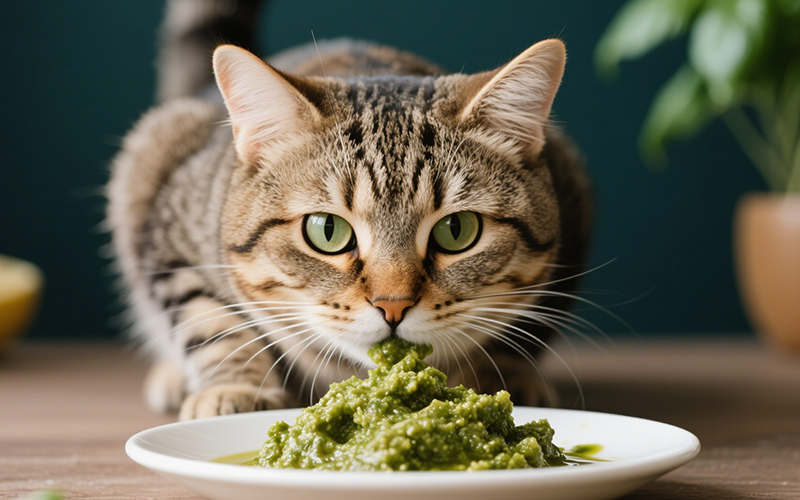
Pesto & Paws: A Dangerous Mix? Can Cats Eat Pesto Safely?
- 24 Apr 2025
Persimmons and Paws: Can Cats Safely Eat This Autumn Fruit? A Vet-Reviewed Guide
- 23 Apr 2025
Nutritional Yeast for Cats: Savory Sprinkle or Health Hazard? A Vet-Reviewed Guide
- 23 Apr 2025
Marshmallows and Cats: A Puffy Problem? Why Vets Say No to This Sugary Snack
- 22 Apr 2025
Kefir for Kitties? A Veterinarian-Reviewed Guide to Safety, Benefits & Risks
- 22 Apr 2025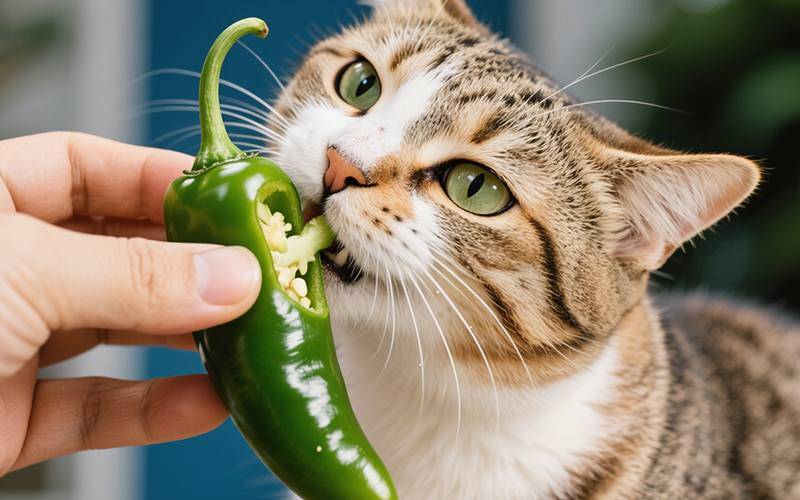
The Burning Question: Can Cats Eat Jalapenos? A Comprehensive Safety Guide
- 21 Apr 2025
